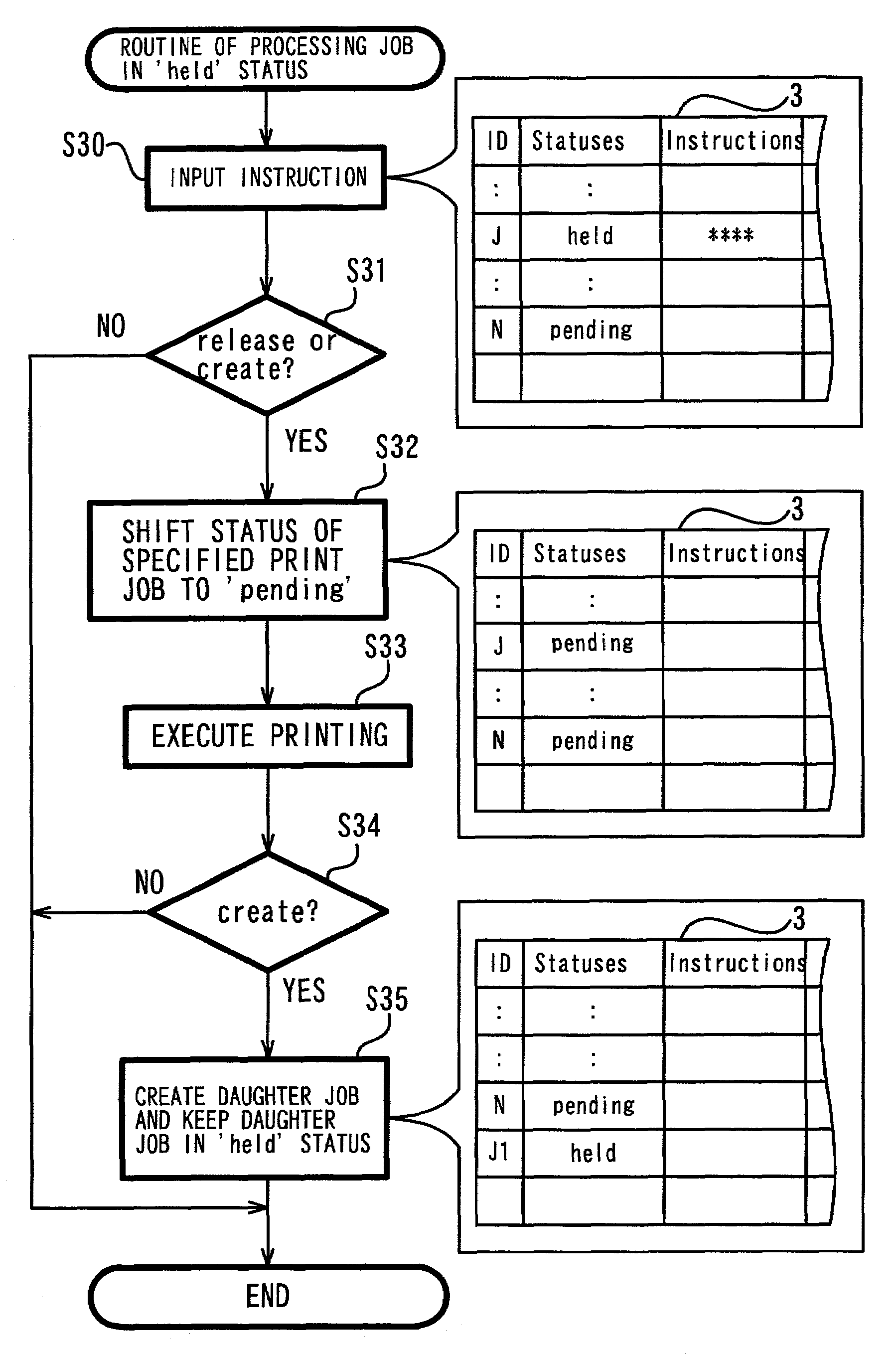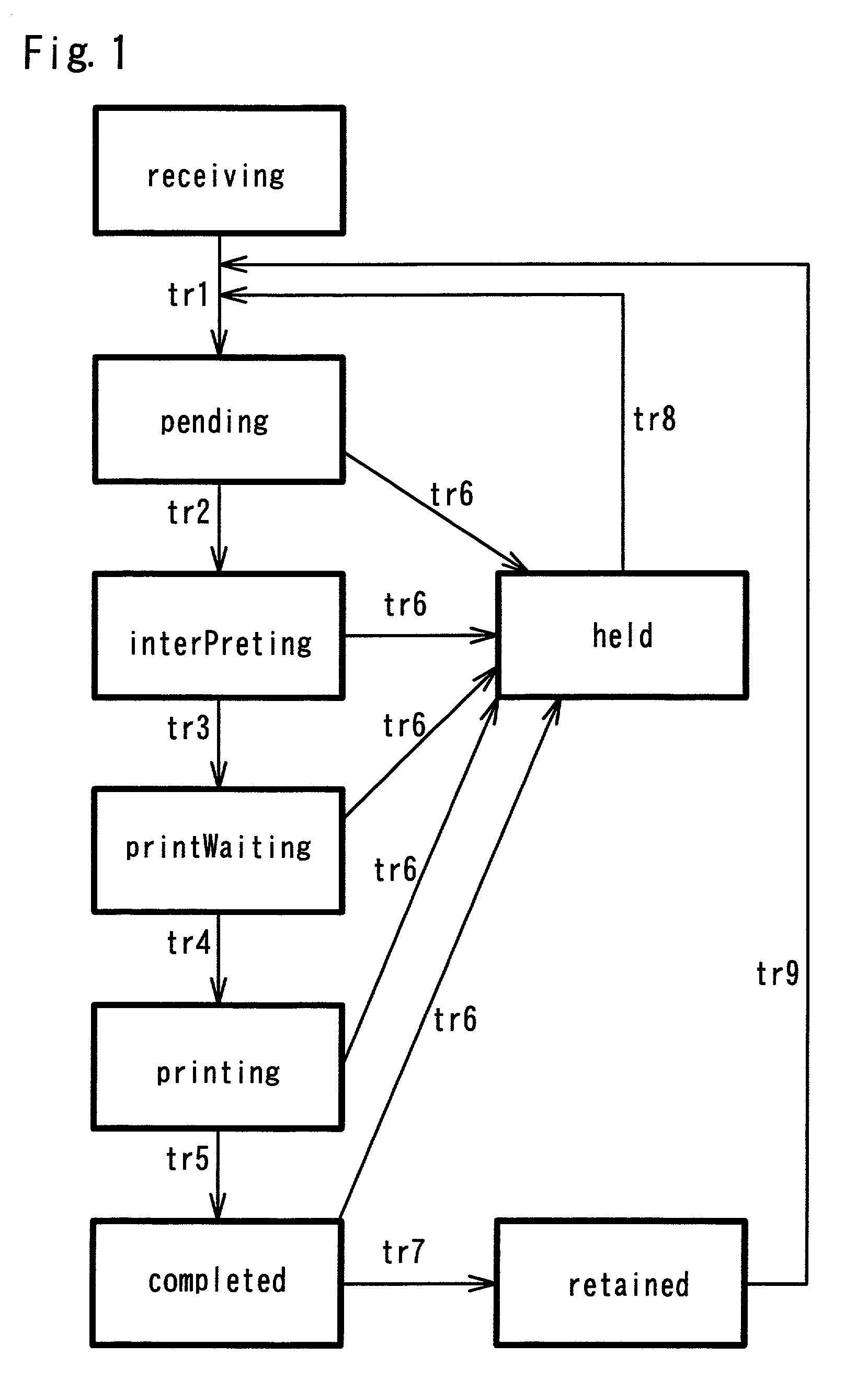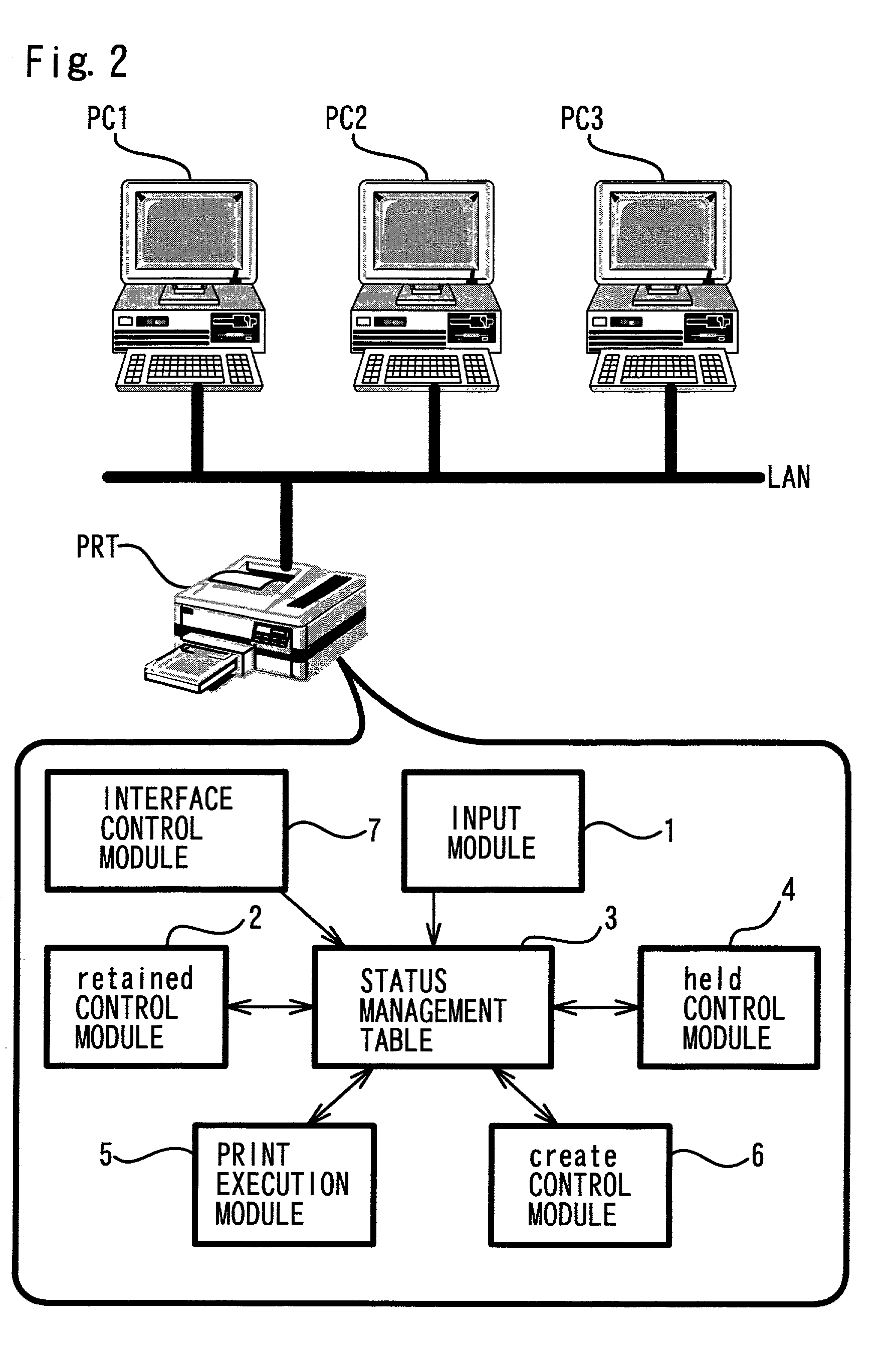Print job management apparatus
- Summary
- Abstract
- Description
- Claims
- Application Information
AI Technical Summary
Benefits of technology
Problems solved by technology
Method used
Image
Examples
second embodiment
D. Second Embodiment
[0069]The first embodiment regards the process of creating a daughter job prior to execution of the actual printing operation in response to input of the ‘create’ instruction. A second embodiment regards the process of creating a daughter job on completion of the printing operation.
[0070]The job management apparatus of the second embodiment has the same functional block construction as that of the first embodiment (see FIG. 2). The difference between the second embodiment and the first embodiment is the functions of the create control module 6 as well as a printing process routine starting in the ‘held’ status.
[0071]FIG. 6 is a flowchart showing the printing process routine executed in the second embodiment. The program starts the processing in response to input of an instruction to a print job in the ‘held’ status at step S30. When it is determined at step S31 that the input instruction is neither ‘release’ nor ‘create’, this means that no printing instruction i...
PUM
 Login to View More
Login to View More Abstract
Description
Claims
Application Information
 Login to View More
Login to View More - R&D
- Intellectual Property
- Life Sciences
- Materials
- Tech Scout
- Unparalleled Data Quality
- Higher Quality Content
- 60% Fewer Hallucinations
Browse by: Latest US Patents, China's latest patents, Technical Efficacy Thesaurus, Application Domain, Technology Topic, Popular Technical Reports.
© 2025 PatSnap. All rights reserved.Legal|Privacy policy|Modern Slavery Act Transparency Statement|Sitemap|About US| Contact US: help@patsnap.com



